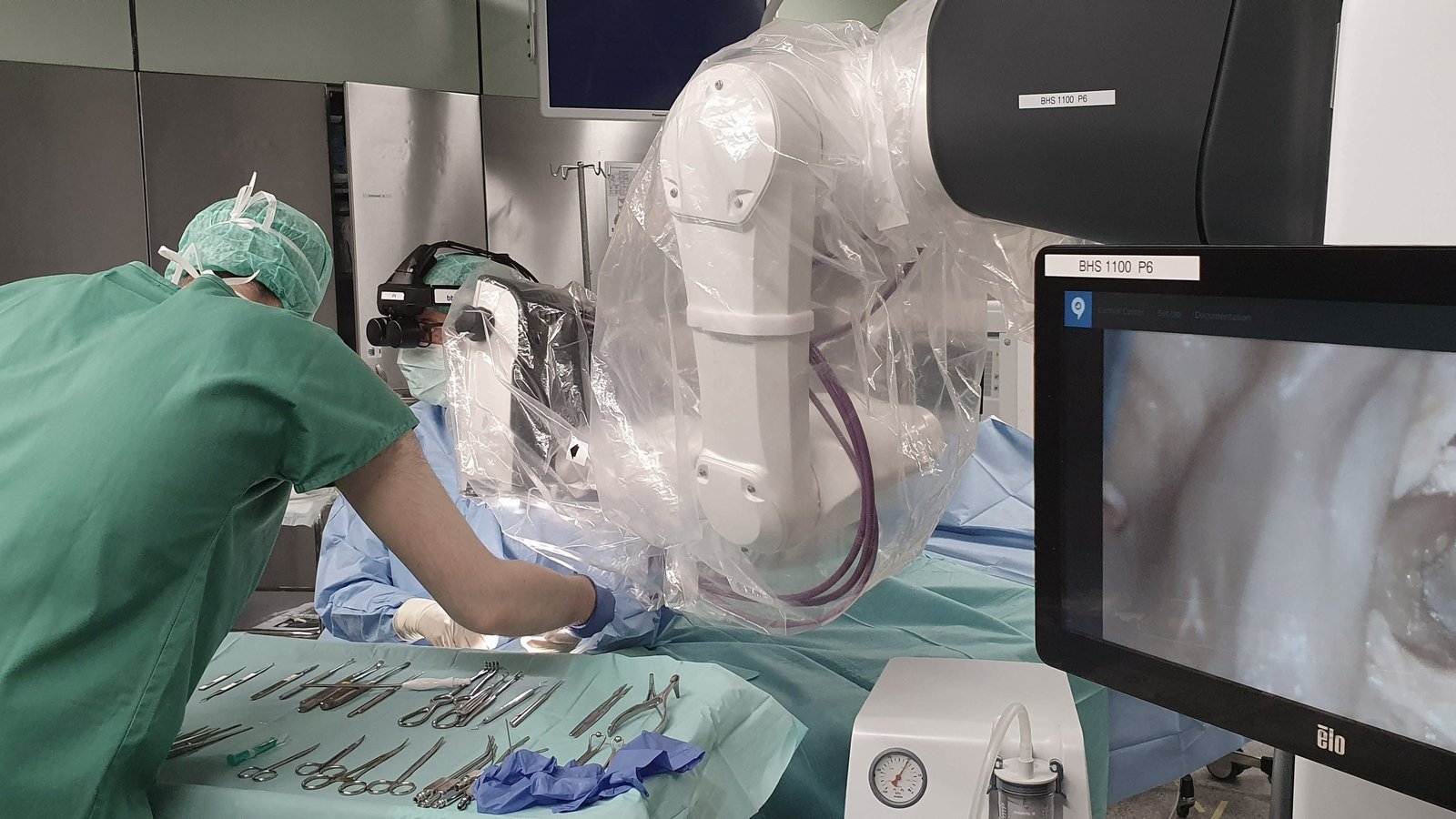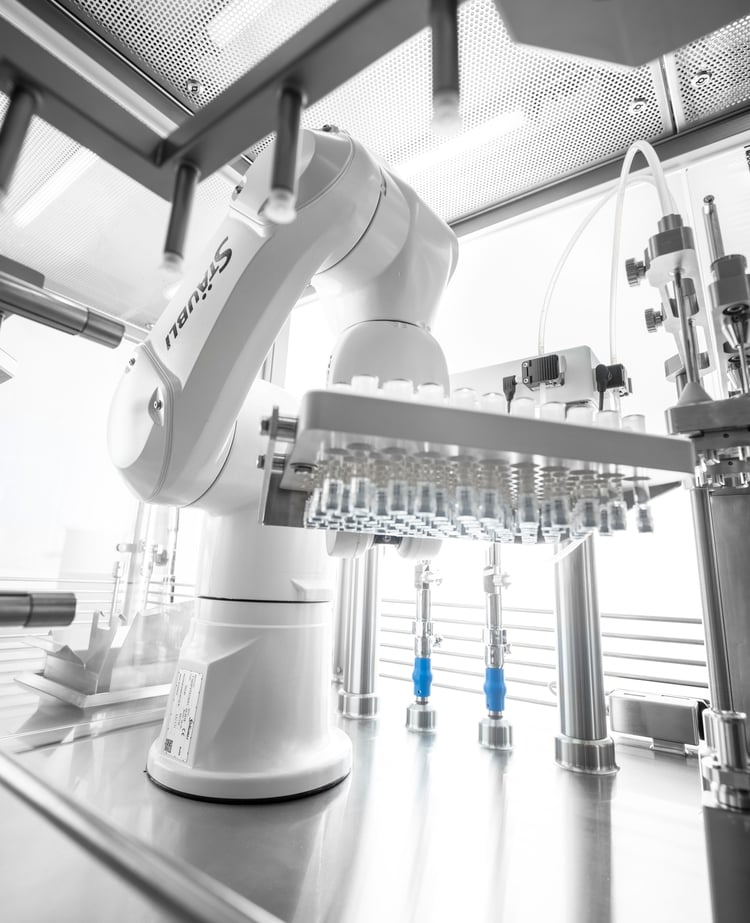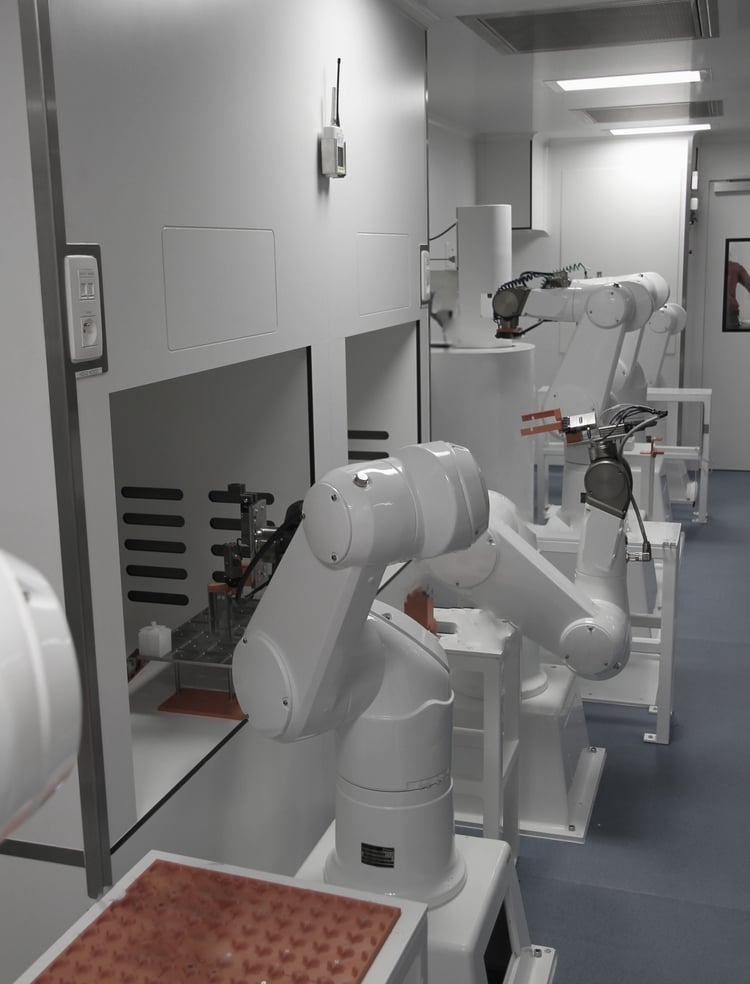
Robotics contributing to human well being
Robots in Pharmaceutical and Medical Fields
Jun 22, 2023 — When using robots in the pharmaceutical and medical fields, Stäubli is one of the pioneers. For decades, the company has been dedicated to the development of robots for life science applications and today can offer a wide range of four- and six-axis kinematics for these areas.
Clear vision under demanding cleanroom conditions: a high-precision Stäubli TX2-60L six-axis robot manages the precise and jerk-free motion sequences of a 3D camera. © Stäubli
Hundreds of examples in medicine and pharmaceuticals demonstrate how the further development of robotics is opening up new areas in these highly sensitive fields of application. Here is a small selection of pioneering solutions.
A clear vision on surgical procedures
One world-first in medical robot technology is the RoboticScope system designed by – again – a startup company, this time from Innsbruck/ Austria. The three founders of BHS Technologies GmbH have designed, to describe it very briefly, a combination of a high-precision robot, a high-resolution 3D camera and an innovative head-mounted display (HMD).
The result: The surgeon is able to look directly into the operating field via a Head-Mounted-Display (HMD). Two digital microdisplays integrated into the HMD directly in front of the surgeon’s eyes show high-resolution, real-time 3D images relayed by the dual camera lenses mounted on the robot head. The position of the robot determines the visible image, allowing the surgeon to operate in a freely selectable and completely relaxed head position.
The surgeon retains control over the exact image field and viewing angle, automatically steering the robot with contact-free head movements. He can easily select the viewing angle of the 8x zoom lenses and even control a sophisticated menu from a microdisplay, allowing the activation and control of further functions.
In this application, the hygienic design and – no less important – the highly precise and jerk free motion of the Stäubli TX2-60L were the reasons for selecting this type of robot. They make sure that the operator always has, in a literal sense, a clear picture of operating field.
As with the entire range of latest six-axis Stäubli robots, the enclosed structure allows for a protection class IP65, with the wrist being IP67 compliant. With cleanroom class ISO 5 as a standard, this six-axis machine allows BHS to save on the potential extra costs of upgrading to a cleanroom version. While in the operating room, the TX2-60L is covered with a sterile sleeve, further preventing any particle emissions and making it ideal for use in these stringent cleanroom environments.
In addition, the new machines are more lightweight, rigid and powerfully motorized, making them even more dynamic. With an accuracy of 0.02 millimeters, they are more precise than ever before.
The six-axis machine is driven by a Stäubli CS9 controller receiving signals from its own digital safety encoders (one per axis) and an integrated safety board. All coordinates of the robot, as well as speed and acceleration, are logged in real time.
Some 500 surgeons around the world have now trialed the RoboticScope. The device is so intuitive that more than 90 percent of users master it after just ten minutes. The TX2-60L contributes to this success by its hygienic design and precise, jerk-free movements, giving just one more example for the use of Stäubli Stericlean robots in pharmaceutical production, innovative medical technology and in the operation theater.
Sterile filling of hyaluron gel
Zellwag Pharmtech AG - a company of the renowned Swiss company Rychiger AG - has recently developed a fully automatic filling and sealing system for hyaluron gel (HA gel). This ingredient is in great demand because it works as a true fountain of youth for the skin.

The Z-810 R-2 machine fills and closes syringes with HA gel not only under cleanroom conditions but also under vacuum because injecting air under the skin is extremely dangerous and must therefore be avoided.
A Stäubli TX2-90 Stericlean six-axis robot is able to handle syringes, vials and cartridges in a confined space. In the first machine of its kind, which was delivered to a pharmaceutical company, the robot receives a tub with one hundred prepared and sterile syringes and holds the syringes precisely under the filling valve in such a way that two are filled at a time. After 50 cycles, all syringes are filled. The highly dynamic Stericlean robot places them back into the tub which is transported by a conveyor system for further processing. In this way, filling rates of up to 2,200 syringes per hour are achieved, the limits here being set by the viscosity of the gel and not by the robot.
A major characteristic of this multi-format line is the high degree of flexibility. Nested and sterile containers with different formats such as syringes, vials and cartridges made of glass or plastic can be processed on the same filling line. The user, in effect, is able to adapt the line to the current demands of the (beauty) market. He can do so in short time because when it comes to programming, there is another unique feature of the Stäubli Stericlean range: thanks to their uniVAL plc interface, the six-axis robots can easily and quickly be programmed directly via PLC from well-known manufactures, in this case a Siemens plc.
This eliminates the need for complex subsystems and interfaces that are difficult to understand, from programming to qualification – and it allows programmers to continue working in their familiar environment without having to learn the robot programming language.
World´s first robot-based reclamation of hip femoral bones for implants
There are robot applications, though, where flexibility is just a minor issue. This is the case in the automated line of Belgian start-up company Texere Biotech. Here, Stäubli Stericlean robots process femoral heads (i.e. the top end of the human thigh bone) in a fully automated line into cuboid implants known as “bone allografts”.

These implants are in high demand as “natural” material for replacing bone material after, for instance, tumor surgery. But the supply is smaller than the demand because up to now, the “bone banks” relied on manual production methods with poor yield. And the danger of cross-contamination could never be excluded totally.
Dr. Denis Dufrane, founder of Texere, worked for a number of years as a specialist in bone grafting – and he settled his company with the desire to supply a greater number of allografts. The solution: Six Stäubli Stericlean robots are installed in a hermetically sealed and extensively glazed 40ft module. The femoral head is inspected, cut by a fully encapsulated waterjet machine, chemically treated, sterilized and inserted into vacuumed vials.
Hygienic standards are extremely high: For each hip bone, a separate kit of vials, labels and even grippers has to be provided. When selecting the robots, there was no doubt that Stäubli proved to be the best solution because the Stericlean robots offer unrivalled hygiene standards.
Dr. Dufrane is satisfied that the time, effort and capital investment in the system has been worth it: “For the first time, we have realized a completely automated system for processing bone tissue. The results include a significantly better yield, higher volumes and lower costs. Above all, full automation gives us a very high level of safety. Contamination, including cross-contamination risks, can be excluded. This is poised to become now a new gold standard for bone implants.”


